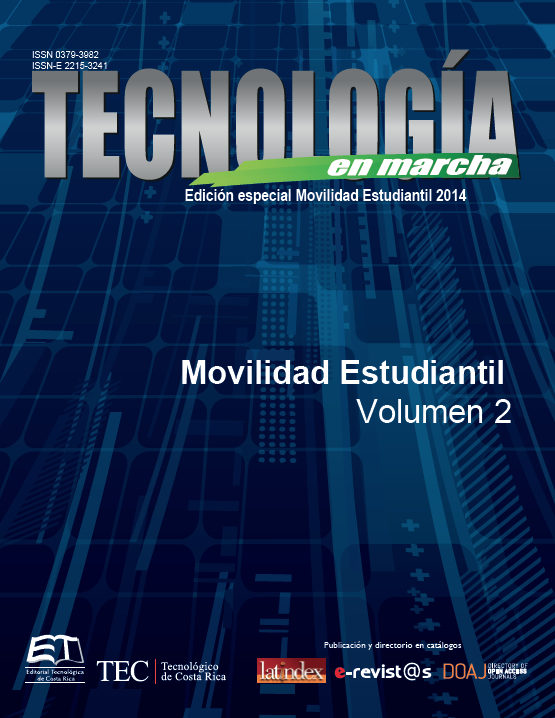Compressed Sensing in Vibration Monitoring Wireless Sensor Network
Main Article Content
Abstract
Over 70% of the bridges in Costa Rica have critical elements in the structure. Wireless sensor networks have been used for structural monitoring because of their short installation time and low economic cost due to the lack of wiring.
In this research is presented a wireless sensor network which uses a compressed sensing algorithm for vibration monitoring on bridges. The network design is proposed expecting data integrity and energy harvesting.
The algorithm performs downsampling by coder-decoder pairs. The selected pair is conditional encoder and predictive decoder because this combination has elements in common that can shared to get better estimates in few steps.
Two coder-decoder pairs variants are presented: variable-fixed and fixed-variable. The first one proposes a constant factor compression during each sampling period while the second presents variable compression that depends of the signal behavior over time.
After an experimental test using Waspmotes the fixed-variable variant has a 56.58% reduction of power consumption by introducing a maximum error ± 0.00195g and compress in 52.44% the amount of samples. This algorithm increased the network energy autonomy from 17 hours to 26.5 hours. Through mathematical analysis, the variable-fixed technique reduces in 74.81% the power consumption in sensing nodes transmissions and decrease in 90% the number of samples.
Article Details
Los autores conservan los derechos de autor y ceden a la revista el derecho de la primera publicación y pueda editarlo, reproducirlo, distribuirlo, exhibirlo y comunicarlo en el país y en el extranjero mediante medios impresos y electrónicos. Asimismo, asumen el compromiso sobre cualquier litigio o reclamación relacionada con derechos de propiedad intelectual, exonerando de responsabilidad a la Editorial Tecnológica de Costa Rica. Además, se establece que los autores pueden realizar otros acuerdos contractuales independientes y adicionales para la distribución no exclusiva de la versión del artículo publicado en esta revista (p. ej., incluirlo en un repositorio institucional o publicarlo en un libro) siempre que indiquen claramente que el trabajo se publicó por primera vez en esta revista.

